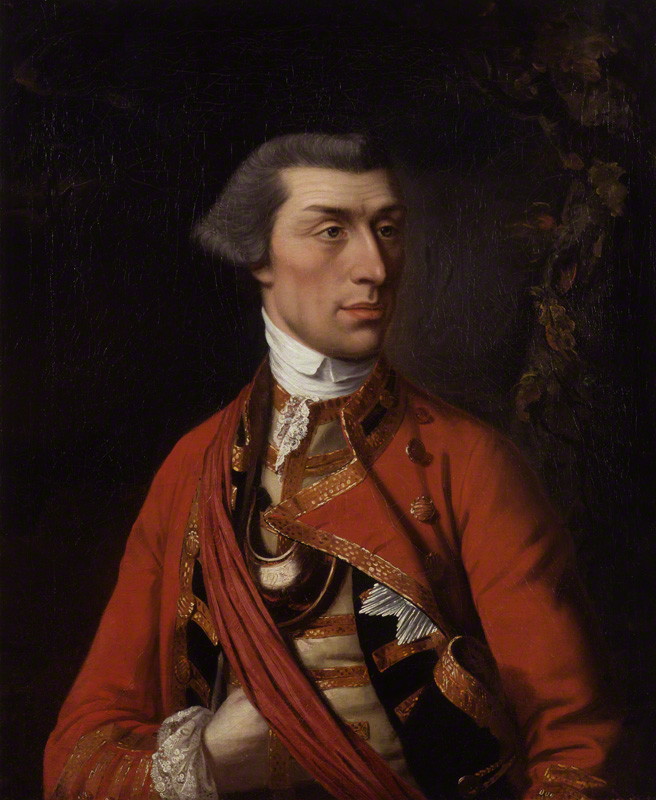|
John Vetch
John Vetch MD (1783–1835) was a Scottish army surgeon, now known for his early work on trachoma. The variant spelling Veitch of his surname was also used. Life He was the eldest son of Robert Vetch of Caponflat, born in East Lothian; James Vetch and Hamilton Vetch were younger brothers. He graduated M.D. at the University of Edinburgh in 1804. He joined the army, in the position of hospital mate until he was commissioned in August 1806. A depot hospital had been set up in 1801 at Selsey to treat British troops returning from the fighting in the French campaign in Egypt and Syria, with the condition called "Egyptian ophthalmia". The name was not a very good fit, but its scope in severe cases is recognised as modern medicine's trachoma. Stewart Duke-Elder considered that further pathogens were involved, Weeks Koch bacillus, and some mixture of gonococcus. In 1804 Vetch observed in a battalion of the 52nd Foot at Hythe, Kent, an apparent outbreak of contagious ophthalmia, wh ... [...More Info...] [...Related Items...] OR: [Wikipedia] [Google] [Baidu] |
Trachoma
Trachoma is an infectious disease caused by bacterium ''Chlamydia trachomatis''. The infection causes a roughening of the inner surface of the eyelids. This roughening can lead to pain in the eyes, breakdown of the outer surface or cornea of the eyes, and eventual blindness. Untreated, repeated trachoma infections can result in a form of permanent blindness when the eyelids turn inward. The bacteria that cause the disease can be spread by both direct and indirect contact with an affected person's eyes or nose. Indirect contact includes through clothing or flies that have come into contact with an affected person's eyes or nose. Children spread the disease more often than adults. Poor sanitation, crowded living conditions, and not enough clean water and toilets also increase spread. Efforts to prevent the disease include improving access to clean water and treatment with antibiotics to decrease the number of people infected with the bacterium. This may include treating, all ... [...More Info...] [...Related Items...] OR: [Wikipedia] [Google] [Baidu] |
39th (Dorsetshire) Regiment Of Foot
The 39th (Dorsetshire) Regiment of Foot was an infantry regiment of the British Army, raised in 1702. Under the Childers Reforms it amalgamated with the 54th (West Norfolk) Regiment of Foot to form the Dorsetshire Regiment in 1881. History Early years The regiment was first raised by Adam Loftus, 1st Viscount Lisburne as Viscount Lisburne's Regiment of Foot in 1689 but was disbanded in 1697. It was re-raised in Ireland, without lineal connection to the previous regiment, by Colonel Richard Coote as Richard Coote's Regiment of Foot in August 1702. The regiment landed at Lisbon in June 1707 for service in the War of the Spanish Succession.Cannon, p. 3 It saw action at the Battle of La Gudina in May 1709Cannon, p. 5 and then remained in Portugal until 1713 when it embarked for Gibraltar and then moved to Menorca later in the year.Cannon, p. 8 It was posted to Ireland in 1719 and sailed to Gibraltar in 1726 to reinforce the garrison.Cannon, p. 9 The regiment sailed for Jamaica in 1 ... [...More Info...] [...Related Items...] OR: [Wikipedia] [Google] [Baidu] |
Charterhouse Chapel
The London Charterhouse is a historic complex of buildings in Farringdon, London, dating back to the 14th century. It occupies land to the north of Charterhouse Square, and lies within the London Borough of Islington. It was originally built (and takes its name from) a Carthusian priory, founded in 1371 on the site of a Black Death burial ground. Following the priory's dissolution in 1537, it was rebuilt from 1545 onwards to become one of the great courtyard houses of Tudor London. In 1611, the property was bought by Thomas Sutton, a businessman and "the wealthiest commoner in England", who established a school for the young and an almshouse for the old. The almshouse remains in occupation today, while the school was re-located in 1872 to Godalming, Surrey. Although substantial fragments survive from the monastic period, most of the standing buildings date from the Tudor era. Thus, today the complex "conveys a vivid impression of the type of large rambling 16th-century mansi ... [...More Info...] [...Related Items...] OR: [Wikipedia] [Google] [Baidu] |
Lord Palmerston
Henry John Temple, 3rd Viscount Palmerston, (20 October 1784 – 18 October 1865) was a British statesman who was twice Prime Minister of the United Kingdom in the mid-19th century. Palmerston dominated British foreign policy during the period 1830 to 1865, when Britain stood at the height of its imperial power. He held office almost continuously from 1807 until his death in 1865. He began his parliamentary career as a Tory, defected to the Whigs in 1830, and became the first prime minister from the newly formed Liberal Party in 1859. He was highly popular with the British public. David Brown argues that "an important part of Palmerston's appeal lay in his dynamism and vigour". Henry Temple succeeded to his father's Irish peerage (which did not entitle him to a seat in the House of Lords, leaving him eligible to sit in the House of Commons) as the 3rd Viscount Palmerston in 1802. He became a Tory MP in 1807. From 1809 to 1828 he served as Secretary at War, organising the finan ... [...More Info...] [...Related Items...] OR: [Wikipedia] [Google] [Baidu] |


